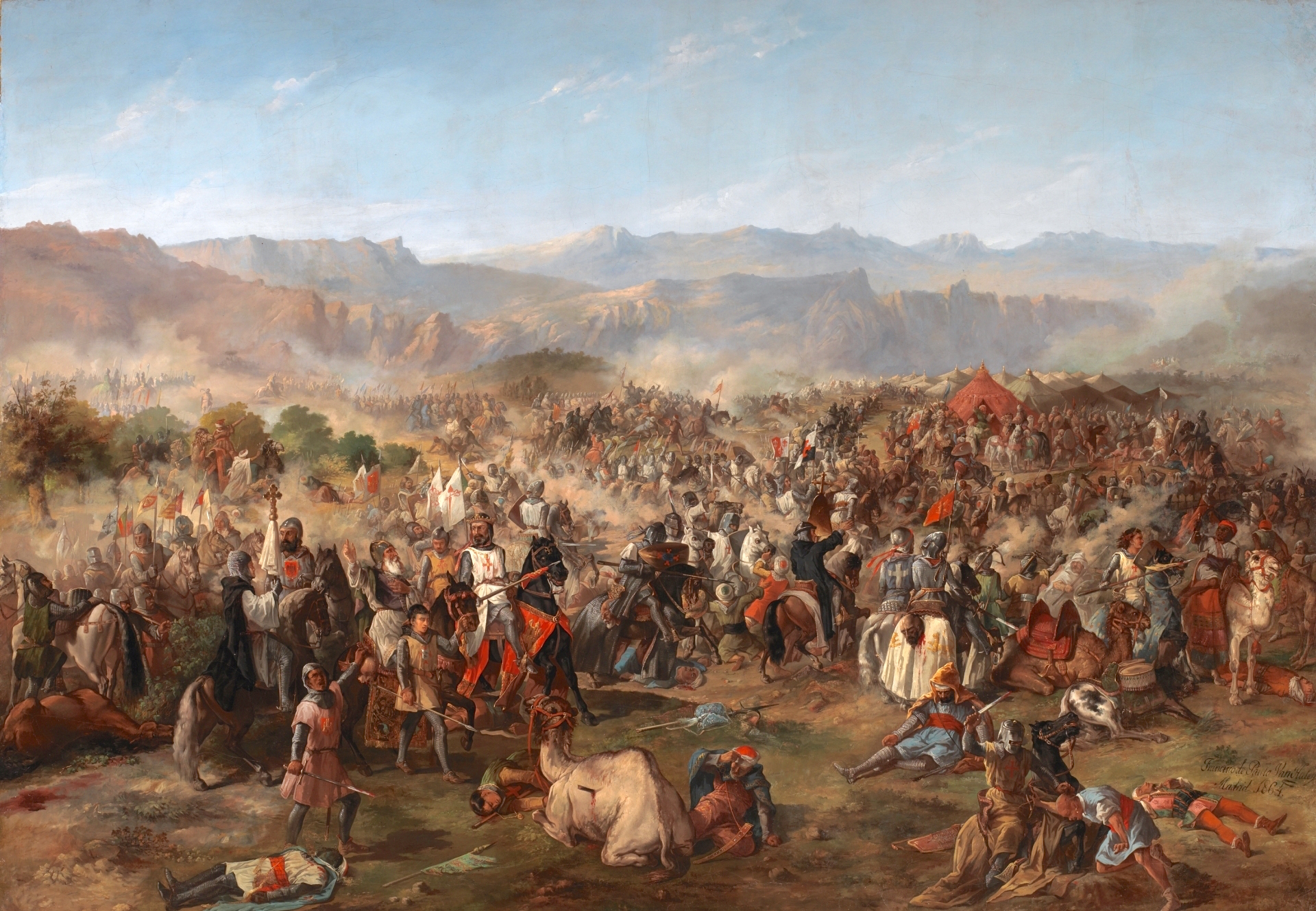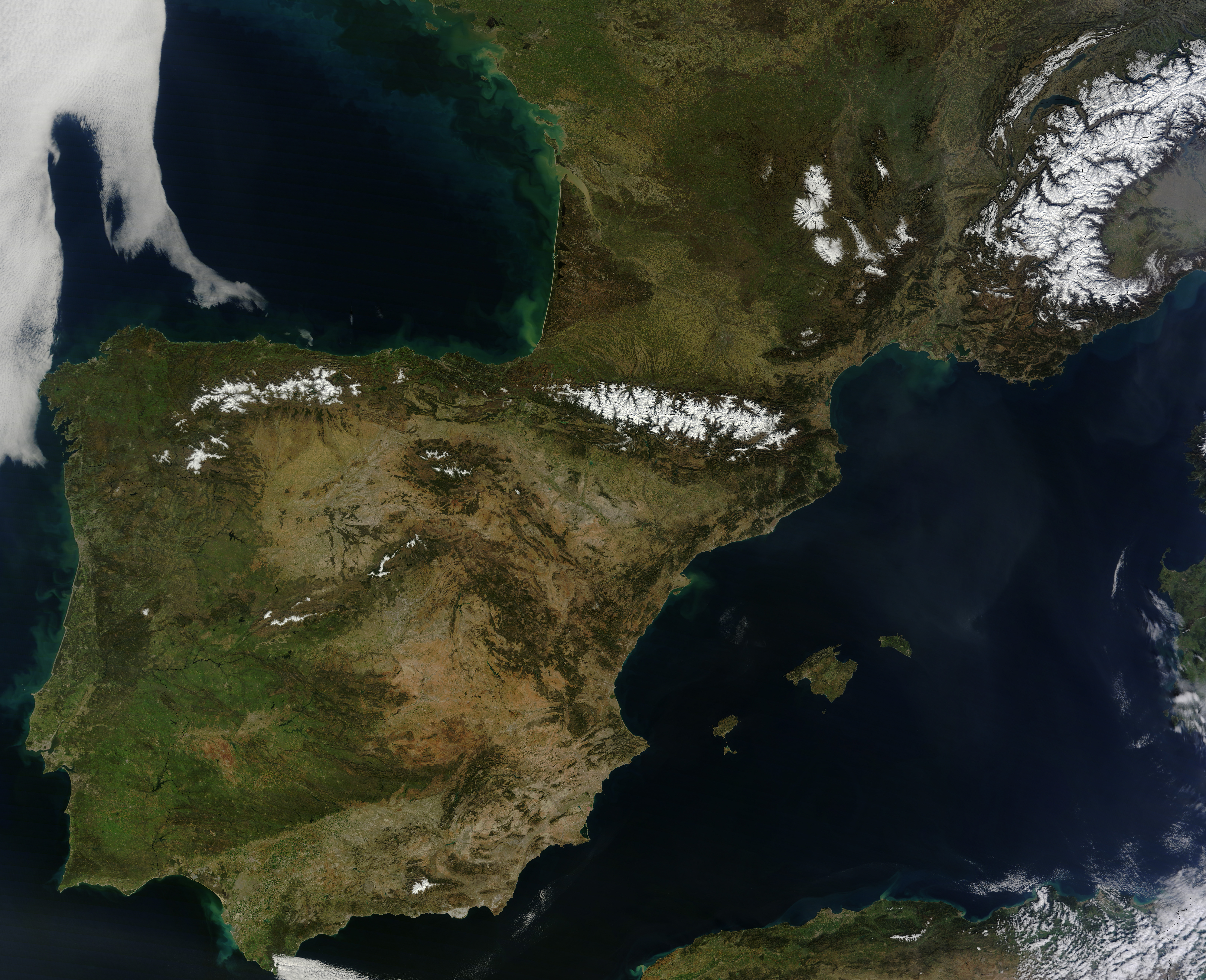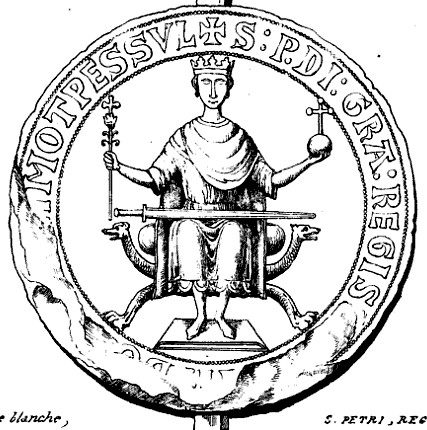|
Battle Of Las Navas De Tolosa
The Battle of Las Navas de Tolosa, known in Islamic history as the Battle of Al-Uqab ( ar, معركة العقاب), took place on 16 July 1212 and was an important turning point in the '' Reconquista'' and the medieval history of Spain. The Christian forces of King Alfonso VIII of Castile were joined by the armies of his rivals, Sancho VII of Navarre and Peter II of Aragon, in battle against the Almohad Muslim rulers of the southern half of the Iberian Peninsula. The caliph al-Nasir ('' Miramamolín'' in the Spanish chronicles) led the Almohad army, made up of people from all over the Almohad Caliphate. Background In 1195, the Almohads defeated Alfonso VIII of Castile in the Battle of Alarcos. After this victory, they took several important cities: Trujillo, Plasencia, Talavera, Cuenca, and Uclés. Then, in 1211, Muhammad al-Nasir crossed the Strait of Gibraltar with a powerful army, invaded Christian territory, and captured Salvatierra Castle, the stronghold of the ... [...More Info...] [...Related Items...] OR: [Wikipedia] [Google] [Baidu] |
Francisco De Paula Van Halen
Francisco de Paula Van Halen y Gil (3 March 1814, Vic - 11 February 1887, Madrid) was a Spanish painter, known primarily for battle scenes and other historical works. Biography Long thought to be a nephew of the General and military adventurer, Juan Van Halen, recent research by Juan Van Halen Acedo indicates that he was probably the General's son.Introduction to ''Juan Van Halen, el oficial aventurero'' by , pg. 33, @ Google Books. He began his career in Barcelona, then moved to Madrid, where he enrolled at the [...More Info...] [...Related Items...] OR: [Wikipedia] [Google] [Baidu] |
Holy Roman Empire
The Holy Roman Empire was a political entity in Western, Central, and Southern Europe that developed during the Early Middle Ages and continued until its dissolution in 1806 during the Napoleonic Wars. From the accession of Otto I in 962 until the twelfth century, the Empire was the most powerful monarchy in Europe. Andrew Holt characterizes it as "perhaps the most powerful European state of the Middle Ages". The functioning of government depended on the harmonic cooperation (dubbed ''consensual rulership'' by Bernd Schneidmüller) between monarch and vassals but this harmony was disturbed during the Salian period. The empire reached the apex of territorial expansion and power under the House of Hohenstaufen in the mid-thirteenth century, but overextending led to partial collapse. On 25 December 800, Pope Leo III crowned the Frankish king Charlemagne as emperor, reviving the title in Western Europe, more than three centuries after the fall of the earlier ancient West ... [...More Info...] [...Related Items...] OR: [Wikipedia] [Google] [Baidu] |
Iberian Peninsula
The Iberian Peninsula (), ** * Aragonese and Occitan: ''Peninsula Iberica'' ** ** * french: Péninsule Ibérique * mwl, Península Eibérica * eu, Iberiar penintsula also known as Iberia, is a peninsula in southwestern Europe, defining the westernmost edge of Eurasia. It is principally divided between Spain and Portugal, comprising most of their territory, as well as a small area of Southern France, Andorra, and Gibraltar. With an area of approximately , and a population of roughly 53 million, it is the second largest European peninsula by area, after the Scandinavian Peninsula. Name Greek name The word ''Iberia'' is a noun adapted from the Latin word "Hiberia" originating in the Ancient Greek word Ἰβηρία ('), used by Greek geographers under the rule of the Roman Empire to refer to what is known today in English as the Iberian Peninsula. At that time, the name did not describe a single geographical entity or a distinct population; the same name was ... [...More Info...] [...Related Items...] OR: [Wikipedia] [Google] [Baidu] |
Muslim
Muslims ( ar, المسلمون, , ) are people who adhere to Islam, a monotheistic religion belonging to the Abrahamic tradition. They consider the Quran, the foundational religious text of Islam, to be the verbatim word of the God of Abraham (or ''Allah'') as it was revealed to Muhammad, the main Islamic prophet. The majority of Muslims also follow the teachings and practices of Muhammad (''sunnah'') as recorded in traditional accounts ('' hadith''). With an estimated population of almost 1.9 billion followers as of 2020 year estimation, Muslims comprise more than 24.9% of the world's total population. In descending order, the percentage of people who identify as Muslims on each continental landmass stands at: 45% of Africa, 25% of Asia and Oceania (collectively), 6% of Europe, and 1% of the Americas. Additionally, in subdivided geographical regions, the figure stands at: 91% of the Middle East–North Africa, 90% of Central Asia, 65% of the Caucasus, 42% of South ... [...More Info...] [...Related Items...] OR: [Wikipedia] [Google] [Baidu] |
Peter II Of Aragon
Peter II the Catholic (; ) (July 1178 – 12 September 1213) was the King of Aragon and Count of Barcelona from 1196 to 1213. Background Peter was born in Huesca, the son of Alfonso II of Aragon and Sancha of Castile. In 1205 he acknowledged the feudal supremacy of the papacy and was crowned in Rome by Pope Innocent III, swearing to defend the Catholic faith (hence his epithet, "the Catholic"). He was the first king of Aragon to be crowned by the pope. In the first decade of the thirteenth century Peter commissioned the '' Liber feudorum Ceritaniae'', an illustrated codex cartulary for the counties of Cerdagne, Conflent, and Roussillon. Marriage On 15 June 1204 Peter married (as her third husband) Marie of Montpellier, daughter and heiress of William VIII of Montpellier by Eudocia Comnena. She gave him a son, James, but Peter soon repudiated her. Marie was popularly venerated as a saint for her piety and marital suffering, but was never canonized; she died in R ... [...More Info...] [...Related Items...] OR: [Wikipedia] [Google] [Baidu] |
Christians
Christians () are people who follow or adhere to Christianity, a monotheistic Abrahamic religion based on the life and teachings of Jesus Christ. The words ''Christ'' and ''Christian'' derive from the Koine Greek title ''Christós'' (Χριστός), a translation of the Biblical Hebrew term '' mashiach'' (מָשִׁיחַ) (usually rendered as ''messiah'' in English). While there are diverse interpretations of Christianity which sometimes conflict, they are united in believing that Jesus has a unique significance. The term ''Christian'' used as an adjective is descriptive of anything associated with Christianity or Christian churches, or in a proverbial sense "all that is noble, and good, and Christ-like." It does not have a meaning of 'of Christ' or 'related or pertaining to Christ'. According to a 2011 Pew Research Center survey, there were 2.2 billion Christians around the world in 2010, up from about 600 million in 1910. Today, about 37% of all Christians live in the A ... [...More Info...] [...Related Items...] OR: [Wikipedia] [Google] [Baidu] |





